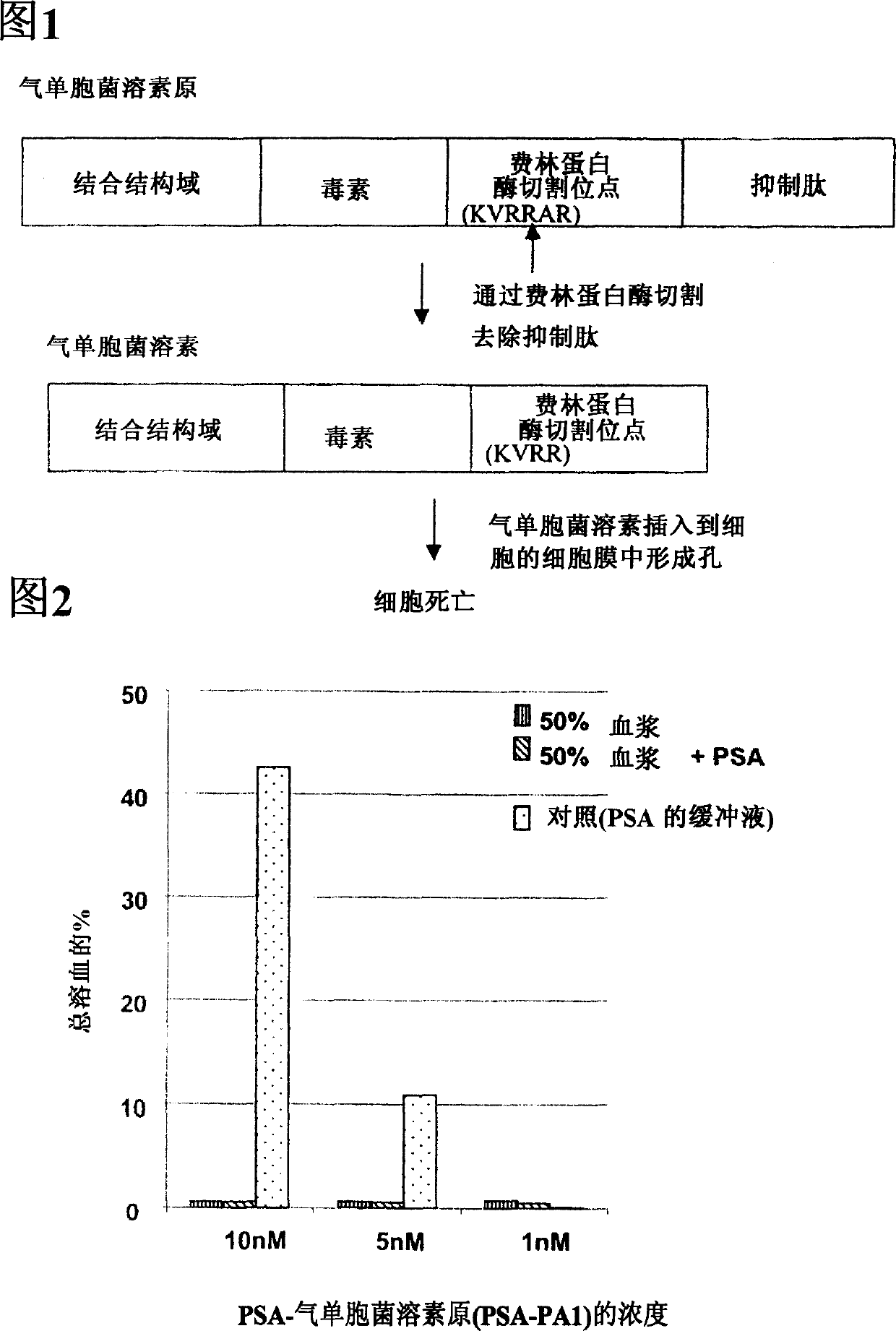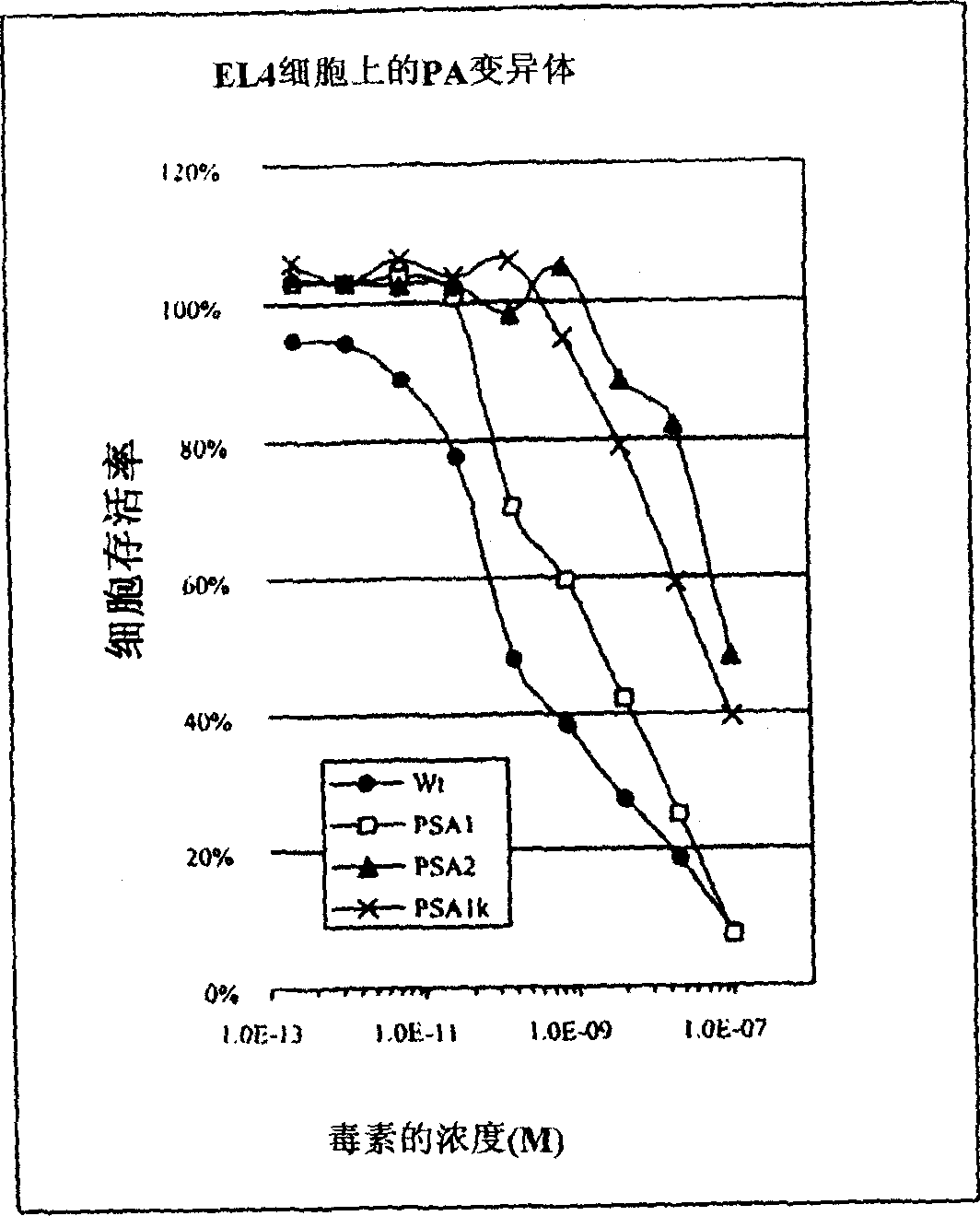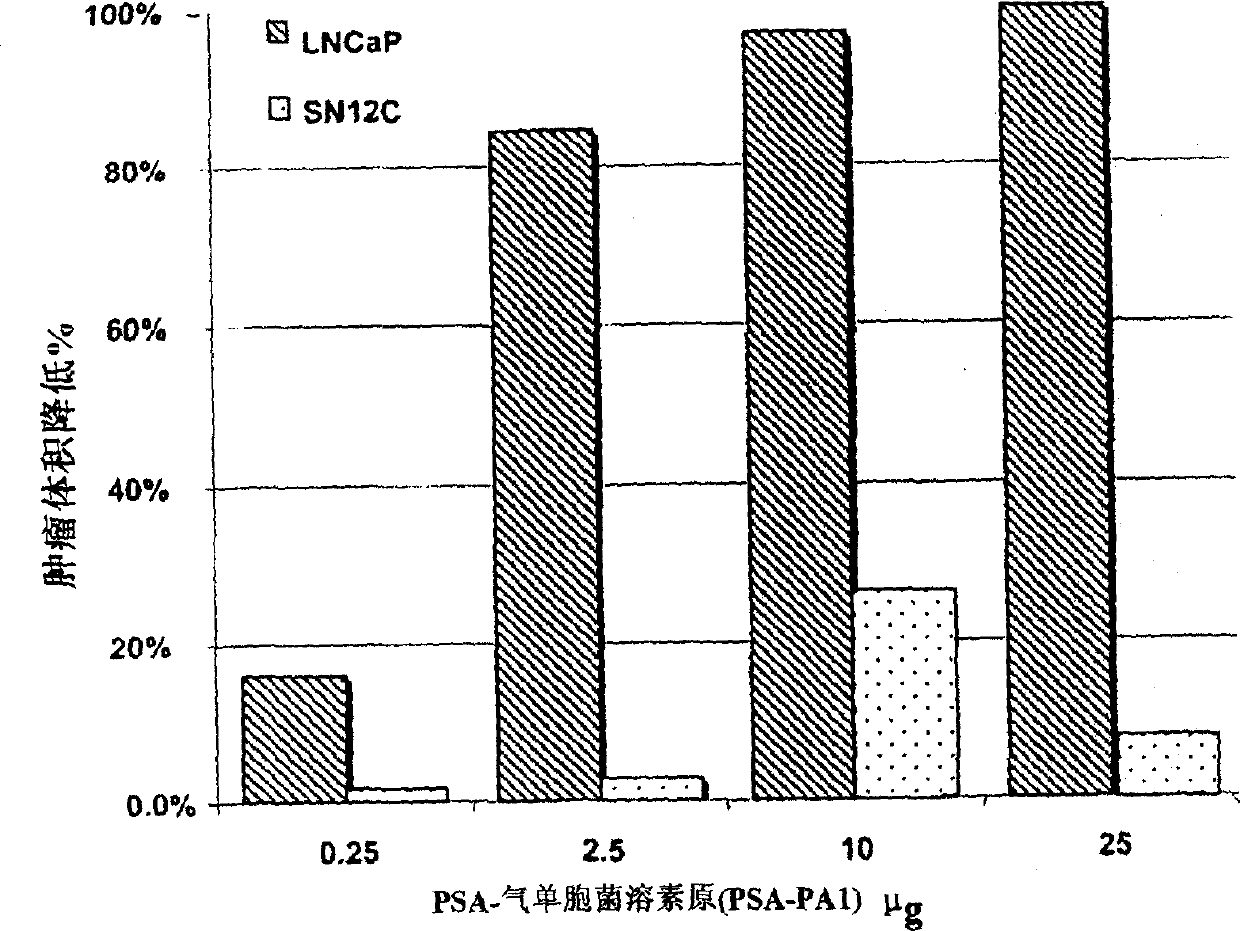Proaerolysin containing protease activation sequences and methods of use for treatment of prostate cancer
A technology of aerolysin and prostate, applied in medical preparations containing active ingredients, gene therapy, peptide/protein components, etc., can solve problems such as systemic poisoning
- Summary
- Abstract
- Description
- Claims
- Application Information
AI Technical Summary
Problems solved by technology
Method used
Image
Examples
Embodiment 1
[0134] PSA-activated production of aerolysin protoxin
[0135] This example describes the method used to generate the mutant aerolysin protoxins shown in Table 1 activated by PSA. Those skilled in the art will appreciate that the same method can be used to produce other variant aerolysinogen proteins activated by PSA or any other prostate specific protease. These proteins can be produced by replacing the furin sequence of aerolysinogen with a prostate-specific protease cleavage site, eg, a PSA-specific cleavage sequence (see Example 9).
[0136] mutant
(SEQ ID
NO)
changes made
(SEQ ID NO)
Comparison with wild-type Aeromonas lysinogen
ADSKVRRARSVDGAGQGLRLEIPLD
(Amino acids 424-448 of SEQ ID NO: 2)
PSA-PA1
(3 and 4)
(SEQ ID NO: 427-432 amino group of 2
Acid) KVRRAR becomes HSSKLQ(5)
ADSHSSKLQSVDGAGQGLRLEIPLD
(Amino acids 424-448 of SEQ ID NO: 4)
PSA-1K
(6 and 7)
(SEQ ID NO: 427-434 am...
Embodiment 2
[0145] PSA-PA1 specifically lyses PSA-producing cells in vitro
[0146] This example describes the specific method used to determine the Aeromonas lysinogen variants described in Example 1. Such a method can be used to test the specificity of any Aeromonas lysin pro variant that contains a PSA-specific cleavage site.
[0147] PSA-PA1 toxin was tested against PSA-producing LNCaP cells (American Type Culture Collection (ATCC), Manassas, VA) and non-PSA-producing TSU cells (Dr. T. Itzumi, Teikyo University, Japan). cells in the presence of 10 -12 to 10 -6 M toxin was incubated for 24 hours. Cells were then counted based on their ability to exclude Trypan Blue and the percent cell viability was recorded. The concentration of toxin required to kill 50% of cells against LNCaP and TSU cell lines (IC 50 ).
[0148] LD of PSA-PA1 on PSA-producing cells 50 is 10 -10 M. In contrast, the LD50 of TSU for non-PSA-producing cells is approximately 5 × 10 -8 M. This result indicates...
Embodiment 3
[0150] PSA-PA1 is not activated in PSA-containing blood
[0151] The disclosed prostate-specific protease-activated variant aeromonasin pro-peptides, such as those described in Example 1, can be injected intraprostatically (or intratumorally) when locally treating prostate cancer. The toxin can also be injected intravenously (or intramuscularly) when systemically treating metastatic prostate cancer. These PSA site-containing variant PA molecules should not be activated in blood due to the presence of large molar excesses of serum protease inhibitors such as alpha 1 - Anti-chymotrypsin and alpha 2 - Macroglobulin, which inactivates PSA enzymatically in the blood.
[0152] To test the nonspecific activation of PSA-PA1 by other serum proteases and PSA in human serum, the following sensitive hemolysis assay was performed. Red blood cells (RBC, 2% v / v) were added to plasma or buffer containing PSA-PA1 toxin ± PSA. The degree of hemolysis was analyzed by measuring the hemoglobin...
PUM
 Login to View More
Login to View More Abstract
Description
Claims
Application Information
 Login to View More
Login to View More - R&D
- Intellectual Property
- Life Sciences
- Materials
- Tech Scout
- Unparalleled Data Quality
- Higher Quality Content
- 60% Fewer Hallucinations
Browse by: Latest US Patents, China's latest patents, Technical Efficacy Thesaurus, Application Domain, Technology Topic, Popular Technical Reports.
© 2025 PatSnap. All rights reserved.Legal|Privacy policy|Modern Slavery Act Transparency Statement|Sitemap|About US| Contact US: help@patsnap.com



